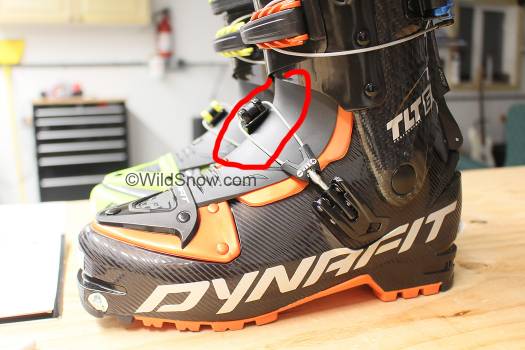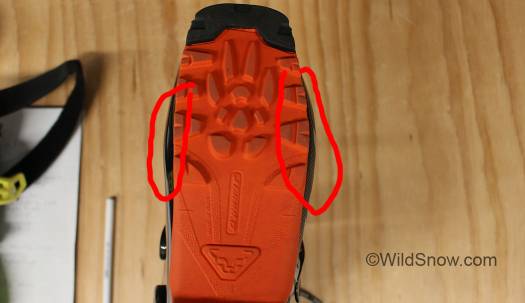Shop for Dynafit TLT6 ski touring boots.
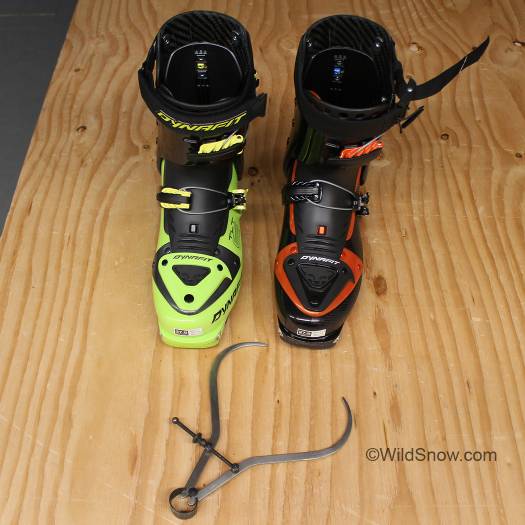
2014-2015 TLT6-P green at left, 2015-2016 black version to right, fraternal twins with significant individuality.
Would parents ever give their twin kids the same name? Gear companies tend to ignore the confusion caused by naming significantly different products with the same moniker. In the case of Dynafit’s TLT6 boot, I’d have prefered they called the new one the TLT7, but what is, is. While they indeed have similar DNA, the differences between the two boots are significant — this is not just a color change. (Please note, for the sake of clarity we’ll sometimes call the 2014-2015 boot the green and the 2015-2016 the black).
The major difference between these fraternal twins? Beyond their color scheme (we like the darker motif much better than the green), new black TLT6 is made from Pebax plastic, while green boot is made from Grilamid. Dynafit says in their 2014-2015 catalog that Grilamid is “the lightest stiffest polymer on the market.” The formulation of Pebax used by Dynafit appears to virtually equal Grilamid in stiffness, perhaps with a minimal increase in thickness at key areas. (Both Grilamid and Pebax are formulations of nylon, so they’re more the same than different.) The black boot feels identical in flex during carpet and bench tests, with the 27.5 shell weighing 40 grams, 1.4 ounces more than the green. That’s a 3.97% increase in weight, which we view as significant but still results in acceptable mass for this class of shoe.
Perhaps a bigger issue with the change in plastic is that Grilamid is incredibly easy to heat mold, while Pebax is the exact opposite. Do it yourself heat molding of Grilamid ski boots has been a fun and productive DIY project for many guys in their home workshops. Not so much for Pebax, which can be frustrating (and expensive if you ruin boots). I’d advise most of you to leave punching Pebax up to a professional with a fully tooled boot fitting operation — and requisite experience that includes working on sacrificial Pebax test boots.
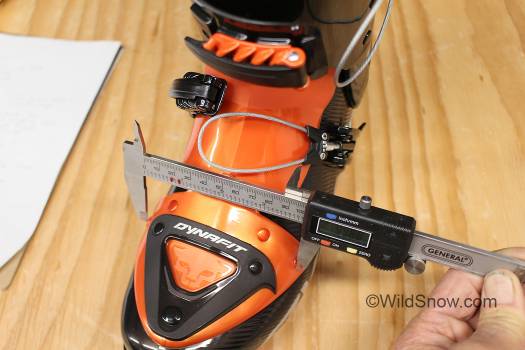
Just 1.5 to 2 mm of width increase doesn’t sound like much, but it’s significant and will make this version of TLT6 much easier to fit. For those of you with narrow feet who have loved the skinny white and green versions of the TLT boots, where does this leave you? I think you’ll still be able to make a fit, but you’ll need a little work in the boot fitting procedure to compensate for the added volume.
Fortunately for those of us needing to punch out the low volume forefoot of the traditional Dynafit TLT 5 and 6 last, along with using Pebax, Dynafit slightly increased TLT6 black volume at the metatarsal, over the instep, and perhaps elsewhere. Measured on the outside at widest point of the mets, Black 27.5 is 105.89 mm, while the green is 103.89. Presumably the Pebax is slightly thicker so let’s say that for certain the black boot is wider by just under 2 mm. Running a shell fit check (stocking foot in boot without liner) shows this to be true. The Black feels ever so slightly more roomy. The black instep height is more commodious as well. This is difficult to measure, but I figure they opened it about 3 mm above the foot instep.
Note that many parts and features of these boots are identical. The soles appear to be exactly the same composition and are the same length and shape. The removable tongues are both made of Pebax, with identical size and markings. The buckles appear to be identical. We see no difference in the Ultra-Lock ski/walk mode system other than a more finished appearance. Molded surface textures are the same and the buckles appear to be identical, with a color change from the older yellow to new version blue and black.
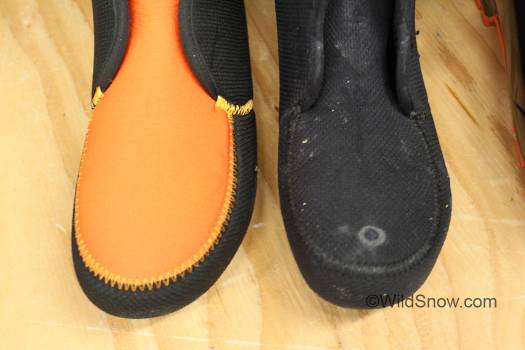
Most of this comparo regards the boot shells. The lighter fully thermo moldable CL liners of both boot versions are pretty much interchangeable in terms of construction and features. The new liner has some lace hooks and a limiting strap at the achilles bellow (prevents damage and perhaps adds a slight bit of resistance to extreme forward flex). Most noticeably, the new liner displays the added shell volume, and it’s got a decorative orange panel on top. Weights of the liners are so similar (the CL liner is a feather) that a comparison in mass is unnecessary, especially considering nearly every skier at the least adds custom insoles, and sometimes major customization that involves adding or subtracting material from the liner — or even swapping in an aftermarket liner.
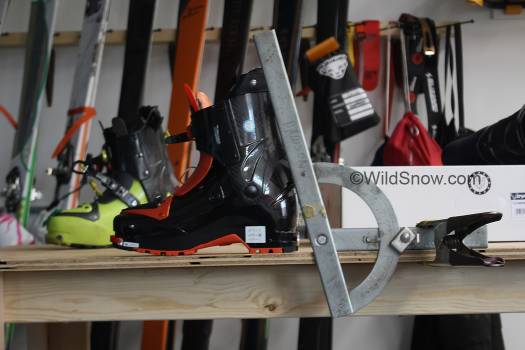
Update: in the comments below a reader mentioned some discrepancy in forward lean for the green vs black, so we whipped out the protractor. Our size 27s measure the same lean, green or black. Optional lean is set to the lesser position on both boots and the small aluminum piece that is flipped to change lean measures the same on both boots. If Dynafit is claiming a change in lean perhaps they’re basing it on changes in liner thickness behind calf?
Overall, the black 2015-2016 TLT6 is a more finished version of the TLT boot family. From the nicely counter-sunk screws in the Ultra-Lock plate to the new quick-release power strap, this is indeed a beautiful shoe. We’d rather Dynafit had stayed with Grilamid plastic, but it appears they’ve chosen a stiff version of Pebax and molded it well, so we’ll live with that and ski a pair of these this winter. Overall, we still feel the TLT6-P to be possibly the best combination of walkability, lightweight, and stiffness you can get other than full-carbon boots. Enjoy the photos, and perhaps enjoy a new pair of TLT6 on snow!
Shop for Dynafit TLT6 ski touring boots.
WildSnow.com publisher emeritus and founder Lou (Louis Dawson) has a 50+ years career in climbing, backcountry skiing and ski mountaineering. He was the first person in history to ski down all 54 Colorado 14,000-foot peaks, has authored numerous books about about backcountry skiing, and has skied from the summit of Denali in Alaska, North America’s highest mountain.

